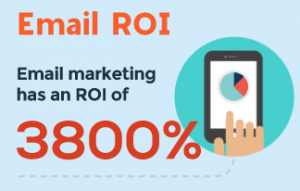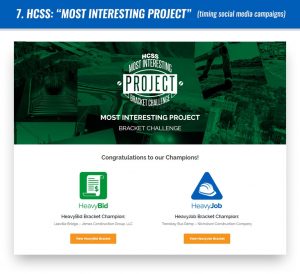Tell Doc Brown to fire up the DeLorean because the future is now. We may be a few years away from flying cars and intergalactic travel, but when it comes to the future of SEO, you don’t need a crystal ball to foresee the direction it will take in 2018.
Much of what has changed in recent years will continue, and recent technologies already in use will carry a greater impact in the coming year. To help you prepare, we’ve predicted the six most important SEO strategies for 2018:
- Comprehensive Content
Content has been king of SEO for some time now, and that’s not about to change. But the quality of content will be more important than ever before. Gone are the days when SEO teams merely had to stuff as many keywords as could fit into a blog post or add as many links as possible, whether they were relevant or not.
As Google has evolved to emphasize topical relevance and context, content optimization requires a more complex approach. Frequent short updates won’t be adequate, either. Google’s search bots will prefer pages that offer in-depth research on relevant topics and content that readers will find most useful. Content consisting of 2,000 or more words with links to other authoritative sites that offer their own comprehensive articles will rank the highest in 2018.
- Video
Think video was important to search in 2017? You ain’t seen nothin’ yet! According to HubSpot, 43 percent of people want to see more online video content, and Google is sure to oblige in its search results. In fact, Cisco predicts that video will make up 80 percent of online traffic by 2021, so SEO teams might as well get onboard now.
Thanks to YouTube, anyone can easily add video content to their website, which offers multiple benefits. Not only will Google prefer sites that feature video, but YouTube is the world’s second-largest search engine in its own right, processing more than 3 billion searches each month.
Google’s infamous algorithm also considers how long a user spends on your site. And by featuring video in your content, either through a YouTube link or embedding it through code, visitors will naturally dwell longer to watch it.
- Voice Search
Siri and Cortana may be the butt of many a joke, but voice search is rapidly gaining popularity. As the accuracy of voice-recognition improves, more than 70 percent of mobile users say they use voice search at least once a month. According to Google, 20 percent of mobile queries are now made through voice, and ComScore predicts that half of all searches will be made via voice by 2020.
What do these surprising statistics mean to SEO teams? It’s time to optimize for voice search. Start by incorporating long-tail keywords into your page URLs, and include more natural language in your content, specifically referencing the who, what, where, when, why and how of your topic. Add an FAQ section to your website, so questions can be phrased the way searchers would naturally ask them, followed by their answers.
Remember, the most common phrases in voice search are, “I want to know,” “how do I,” “to go,” “to do” and “to buy.” Be sure your content references information including them.
- Mobile First
It’s been a year since Google announce its plans to primarily search the mobile version of a site’s content to rank pages. While the algorithmic change hasn’t yet been officially implemented, it’s bound to take effect in 2018. It only makes sense since 60 percent of Google searches are now made from a mobile device.
Once Google fully transitions to the mobile-first formula, content found on your site’s desktop version but hidden in the mobile-optimized page will be completely ignored by the search bots. Therefore, it’s time to start updating your mobile site, making sure that it features all the same data, buttons, menus and tags included in your classic website.
Be sure your mobile website is user-friendly and doesn’t require extra scrolling or difficult-to-access menus. Not only should you update your mobile website content in 2018, but Google also recommends you switch from an “.M” version, to a responsive design. If you’re unsure if your site makes the grade, try out Google’s Mobile-Friendly Test tool.
- Page Engagement
Google’s algorithms place users’ needs first and foremost. Last year it introduced Rank Brain technology to measure how users interact with their search results and adjust rankings accordingly.
For example, if a user clicks on your page and spends several minutes reading your content, Rank Brain will take note of that engagement and likely boost your site’s ranking. But if searchers access your page and quickly leave, Rank Brain will associate that with bad content and de-rank the site.
Therefore, the more content on your page that a user will want to read, watch or spend time looking at, the longer the dwell time. A recent study by SearchMetrics found that the average dwell time for pages within Google’s top 10 results is 3 minutes and 10 seconds.
- Earned Links
Backlinks will continue to be one of the major search ranking factors in 2018. But the quality of links are more important than ever before. Therefore, make sure you are not building as many links as possible, but instead earning the best relevant links. Low-quality, “spammy” links can even get your site penalized in search.
How do you earn high-quality links? Start with amazing content. Publish authoritative articles with information that other highly-ranked sites will want to link to. A Backlinko study found that of 1 million search results analyzed, linking to a page correlated with rankings more than any other aspect.
While you’re at it, it can’t hurt to build relationships with other authoritative publishers in your niche, sharing content with one another and linking to each other’s sites.
Digital & Social Articles on Business 2 Community(17)
Report Post





